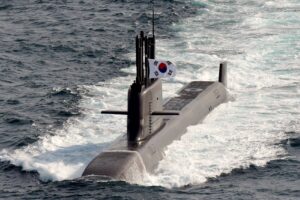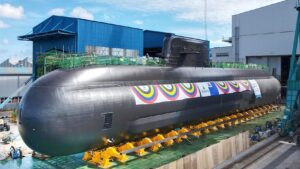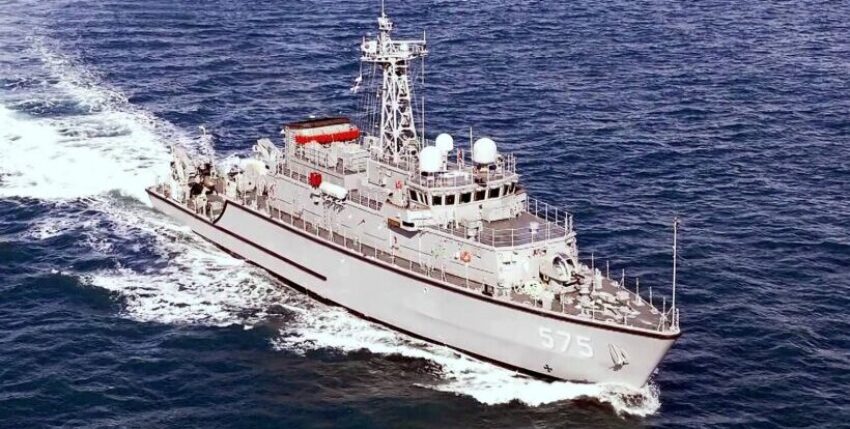New minesweepers for South Korea
In mid-November, the minesweeper NAMHAE, the first of three of the second batch of the YANGYANG class, was hoisted in Busan. However, the last unit of the first batch of this class was commissioned fifteen years ago. Although identical hulls have now been built for the second batch, the sensor and effector suite has undergone significant further development and is now state of the art. The launches of the two other boats, HONGSEONG and GOSEONG, 16 and 11 months ago respectively, suggest that they will enter service next year. However, Namhae is due to set sail on her first missions from February.
Low level of MCM funds
In addition to the three older minesweepers of the YANGYANG class (900 tonnes), South Korea only has six other minesweepers of the smaller SWALLOW class (500 tonnes), similar to the Italian LERICI class, with an average age of 30 years in a navy of 70,000 men/women. However, as an economic power in an exposed peninsula location, this is not an excessive amount of mine defence capability.
Korean Attack Submarine Programme
The Korean Attack Submarine Programme looks much better with the three-stage expansion of the South Korean submarine flotilla from 1994 to 2029. The first series of nine boats of the German type 209/1200 CHANG BOGO from the 1990s is already in the midlife conversion phase. The other nine boats of the German type 214 of the second series, called KSS-2 (2,000 tonne class) with external air-independent propulsion, have all been in service for three years. The last series of nine boats, KSS-3, a further development of its own with over 3,000 tonnes and 84 metres in length, is also designed to carry/launch SLBMs (Submarine Launched Ballistic Missiles) with six vertical launch silos in a double row behind the turret superstructure.

KSS-3, first lot
This series was also built in three batches like the previous series. The first boat of the first batch, KSS-3, was christened DOSAN AHN CHANGBO (thus also the class designation) at the launch and entered service in mid-August 2021 after sea trials. Shortly afterwards, the third boat, named SHIN CHAEHO, was launched in September, while the second boat is currently undergoing its functional trials.

KSS-3, second lot
The second batch of two boats, KSS-3 batch II, underwent a design review following an assessment of the first North Korean SLBM launch in early 2016 and was promptly extended by six metres to accommodate four more SLBM launch silos. LEE BONG CHANG, the first unit of this now 4,000-tonne class with ten vertical launch silos, is still under construction. The keel of the second unit of Lot II was laid in September and is scheduled to be launched in 2026 and put into service two years later.
KSS-3, third lot
As Lot III of the KSS-3 is to comprise a further four units, it can be assumed that, firstly, further adjustments will be made and, secondly, that the timeline will be exceeded by 2029. But this should not really be seen as a shortcoming of such a consistent, broad and ambitious submarine programme, from the conventional boat to the AIP and SLBM capability.









